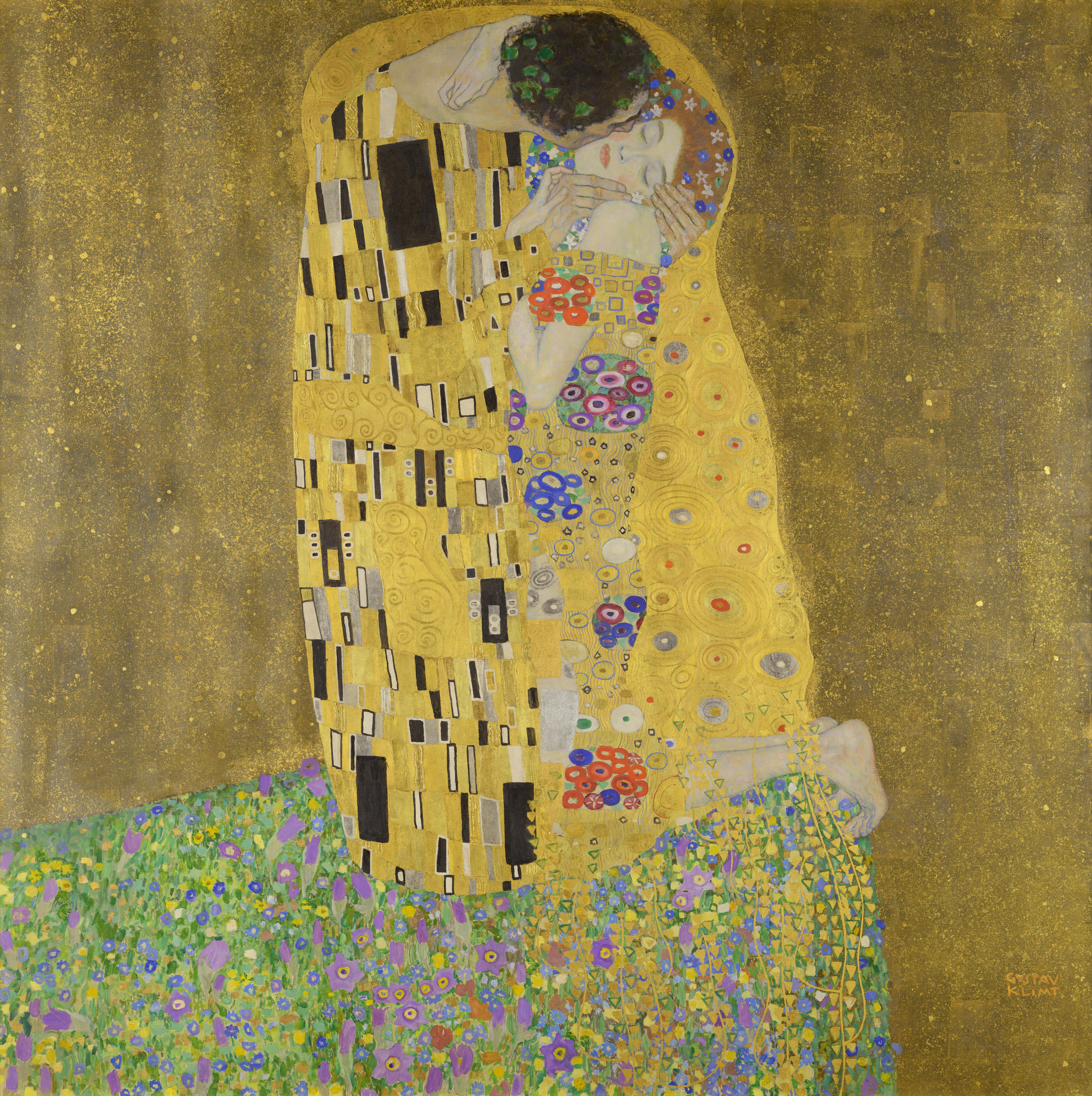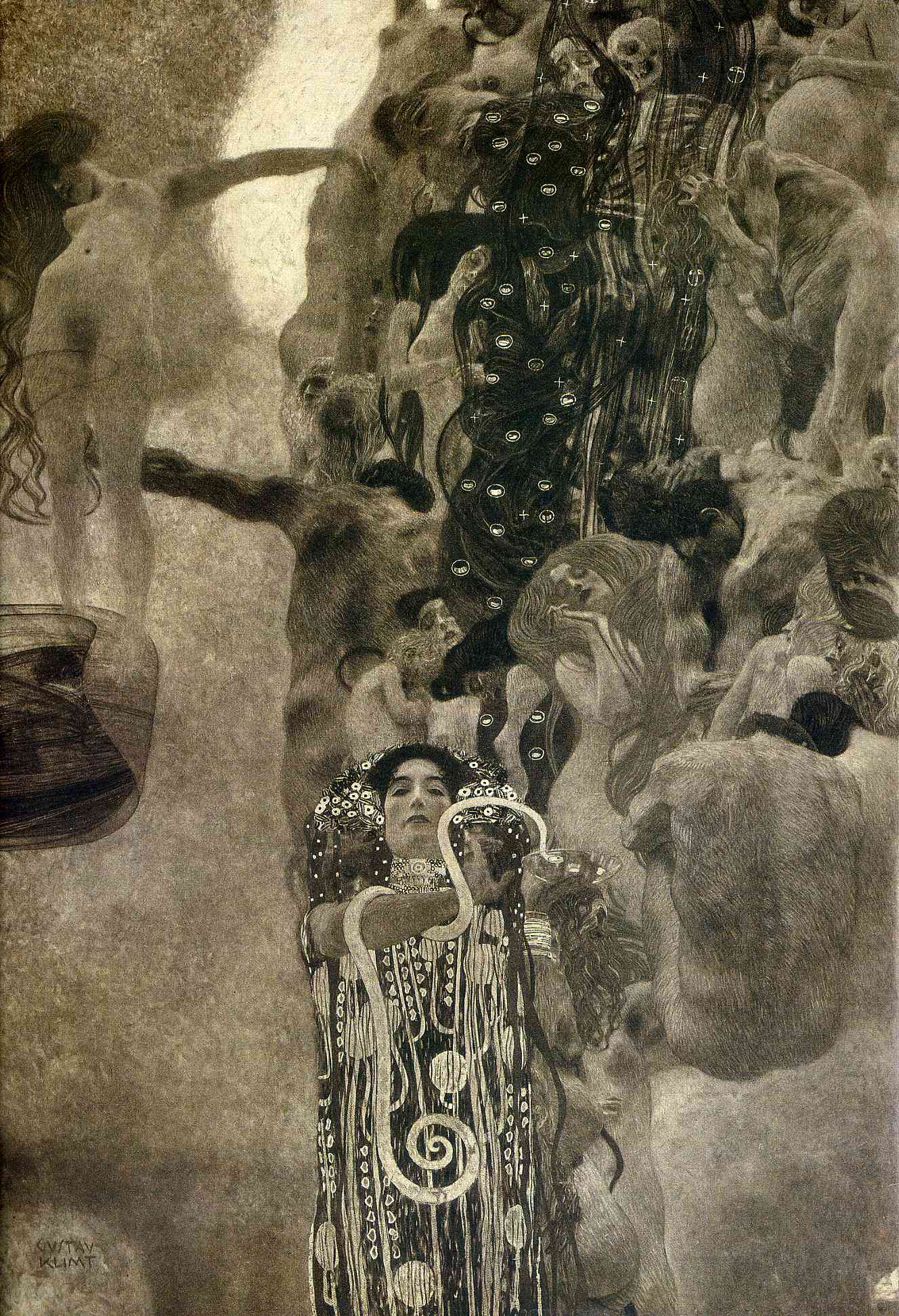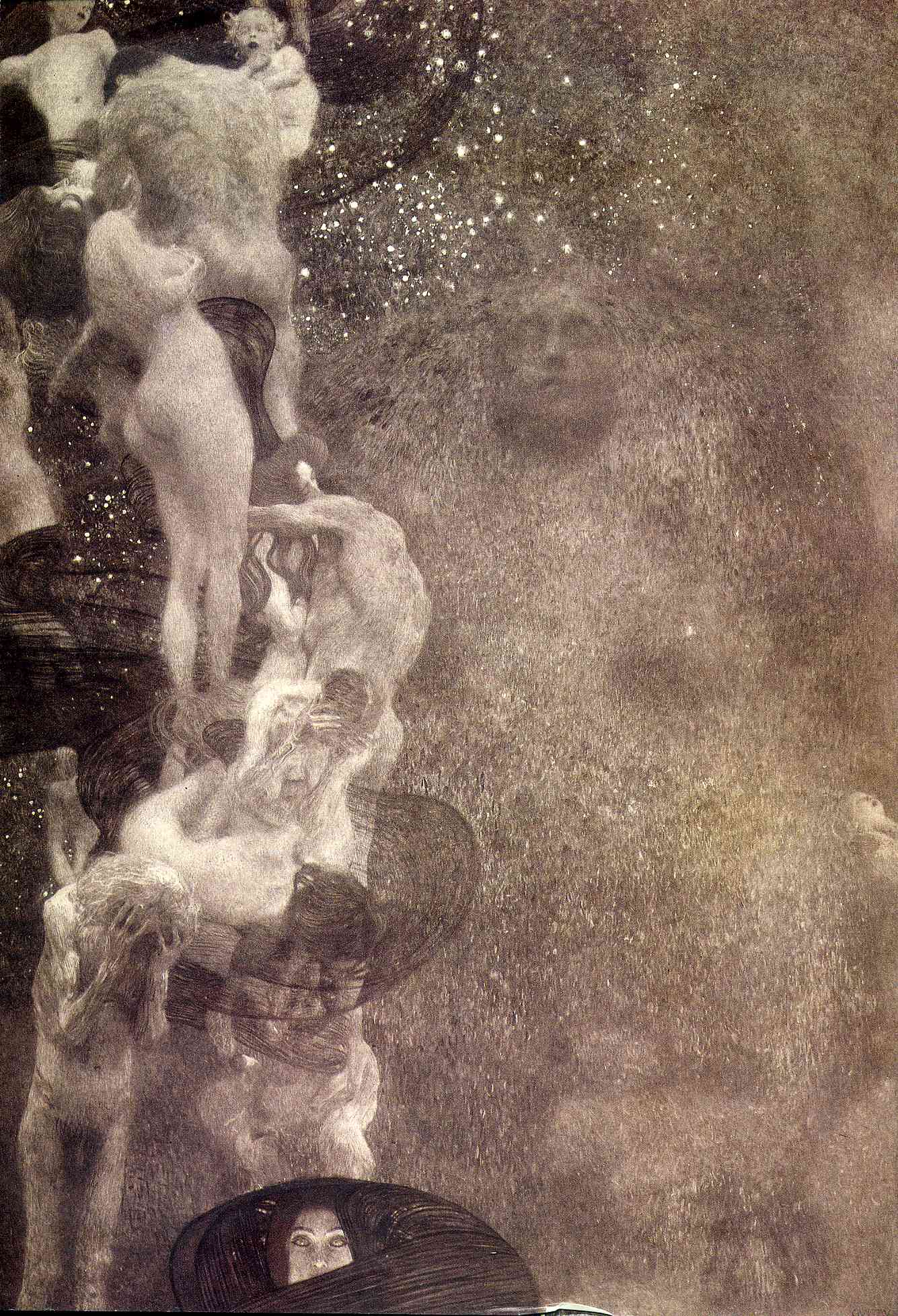
The Kiss (on the right) is one of the most frequent pictures in student rooms. Female students that is. The gold, the flowers, the gently undulating figure of a red-haired and pink woman being embraced and kissed by an angular and darker man – what’s not to like?
But the early 20th-century Austrian painter Gustav Klimt wasn’t always a crowd pleaser. In 1899 he won a commission for three paintings for the ceiling of the University of Vienna’s Great Hall. But his depictions of the goddesses of Philosophy, Medicine, and Jurisprudence caused an uproar of university establishment and were never displayed. They were later looted by Nazis and destroyed in by the fire in 1945, so we have only a fragment in colour and black-and-white reproductions of the rest.
Even from the ghost of the paintings, we can see that Klimt combined his strands of his cash-cow ornate female portraits with his post-Great Hall allegorical groups, as in “award-winning” Death and Life. (If you are ever in Vienna, do visit Leopold Museum for Klimt’s works if nothing else. “Death and Life” is mesmerizing, it’s 2m x 2m but feels like five times that.)
Why were his Great Hall paintings called ‘pornography’ and ‘perverted excess”? Not because the educated people at the end of the 19th century didn’t see nude figures on paintings. On the contrary, classical paintings of this period were full of nudes – relaxing in languorous poses, plump and pink. Klimt’s nudes are emaciated, twisted – and have visible pubic hair and genitals, hence pornography accusation. They also don’t suffer heroically as the heroes of classical paintings do, but depicted being in despair, viscerally – “in excess”.
However, the main problem of Klimt’s paintings was not the nudes but the portrayal of the sciences. The 18th century, still recovering from the haze of Middle Ages saw glorification of scientific progress and scientists. The 19th century was the century of science, when the first diseases were defeated, of expanding industry, of electricity, telegraph, and railways connecting cities to each other. The advances inspired enthusiasm and respect for scientists.
Alas, nothing is straightforward in human history, even the progress. 19th century heard first dissenting voices of artists, who pointed out dangers of hubris, for example Mary Shelley in Frankenstein, the first SciFi novel, and works of G.H. Wells, especially in Island of Dr. Moreau.
Klimt’s portrayal of sciences is more in the tradition of Shelley and Wells than those of painter of science pioneer Joseph Wright. Klimt’s sciences are far from glorious figures; they stand aside from the suffering human mass reflecting the feeling of omnipotence exuded by the scientific establishment.

The only surviving fragment in colour shows Medicine clothed in blood-red. Experimentation on humans without their consent since the start of modern medical science, mutilating medical procedures and the usual medicine’s practitioners belief in their righteousness warrants arrogant, closed expression of Medicine looking down at the spectators. The prominent serpent in her hands – not only a part of traditional medicine emblem – but a universal figure of hate poised to strike. A skeleton, death, lurks among human bodies.

Depiction of Jurisprudence, a social science, study and theory of law is most peculiar. The goddess of Justice, which I imagine clothed in gold, holds scales in the background. Her companion holds a page with letters Lex – according to the Latin saying “Dura lex sed lex” (The law is harsh but it is the law). In the front coils an octopus-like presence. It surrounds a tortured male figure, reminiscent of Kafka’s The Trial where the protagonist is arrested and prosecuted for an unclear reason by an inaccessible authority.

Kafka wrote The Trial years after Klimt’s pictures. But considering what happened with the world in the 20th century and the role sciences played in the tragedies, starting with chemical weapons and not ending with technological catastrophes, Klimt’s pictures feel prophetic, even more modern, more 21st than the 20th century.
Literature:
Bárbara C. Finn, Julio E. Bruetman, Pablo Young. Gustav Klimt (1862-1918) y su cuadro sobre la medicina. Rev. méd. Chile vol.141 no.12 Santiago Dec. 2013

thank you very much. very informative.